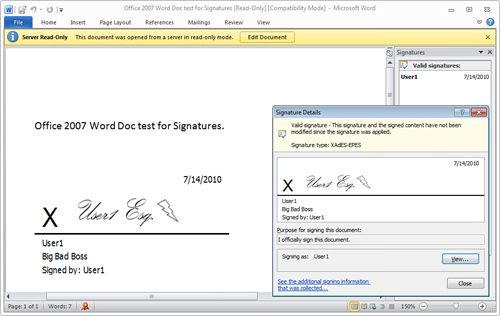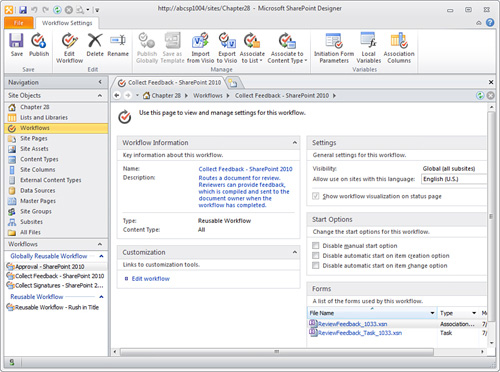Microsoft’s decision to make this available in SharePoint
Foundation 2010 but not the other standard SharePoint Server 2010
workflows is somewhat mysterious. For organizations using SharePoint
Server 2010, the following additional workflows should be tested and may
well prove to be more useful than the Three-State workflow:
Approval— An Approval workflow routes a document for
approval. Approvers can approve or reject the document, reassign the
approval task, or request changes to the document.
Collect Feedback— This routes a document for review to reviewers
who can provide feedback, which is compiled and sent to the person who
initiated the workflow.
Collect Signatures— This workflow routes a Microsoft Office document to a group
of people to collect their digital signatures and must be started in an
Office application that is part of the Office 2007 or 2010 family. Figure 1 shows an example of a Word 2007 document that was
included in a Collect Signatures workflow after User1 has opened it and
added a signature to the document by executing the task which then
provides the interface for adding the signature. The signature is a
graphic image User1 created and then added to the document. The process
of signing the document also marks it as Final, and any changes will
invalidate the signature, so the signing process is more complex than
simply adding a graphic image to the Word document.

Translation
Management— This workflow
manages the manual document translation process by creating copies of
the document to be translated and assigning translation tasks to
translators. This workflow is available only for Translation Management
libraries.
Disposition
Approval— This manages document
expiration and retention by allowing participants to decide whether to
retain or delete expired documents.
The Approval,
Collect Feedback, and Collect Signatures workflows are available for
editing when Designer 2010 is used to open a site, and listed in the
Globally Reusable Workflow section. Figure 2 shows the settings page for the Approval workflow. Note that
there is an Edit Workflow link available, as well as the ability to
disable different Start Options, and the actual InfoPath forms can be
accessed and edited.
